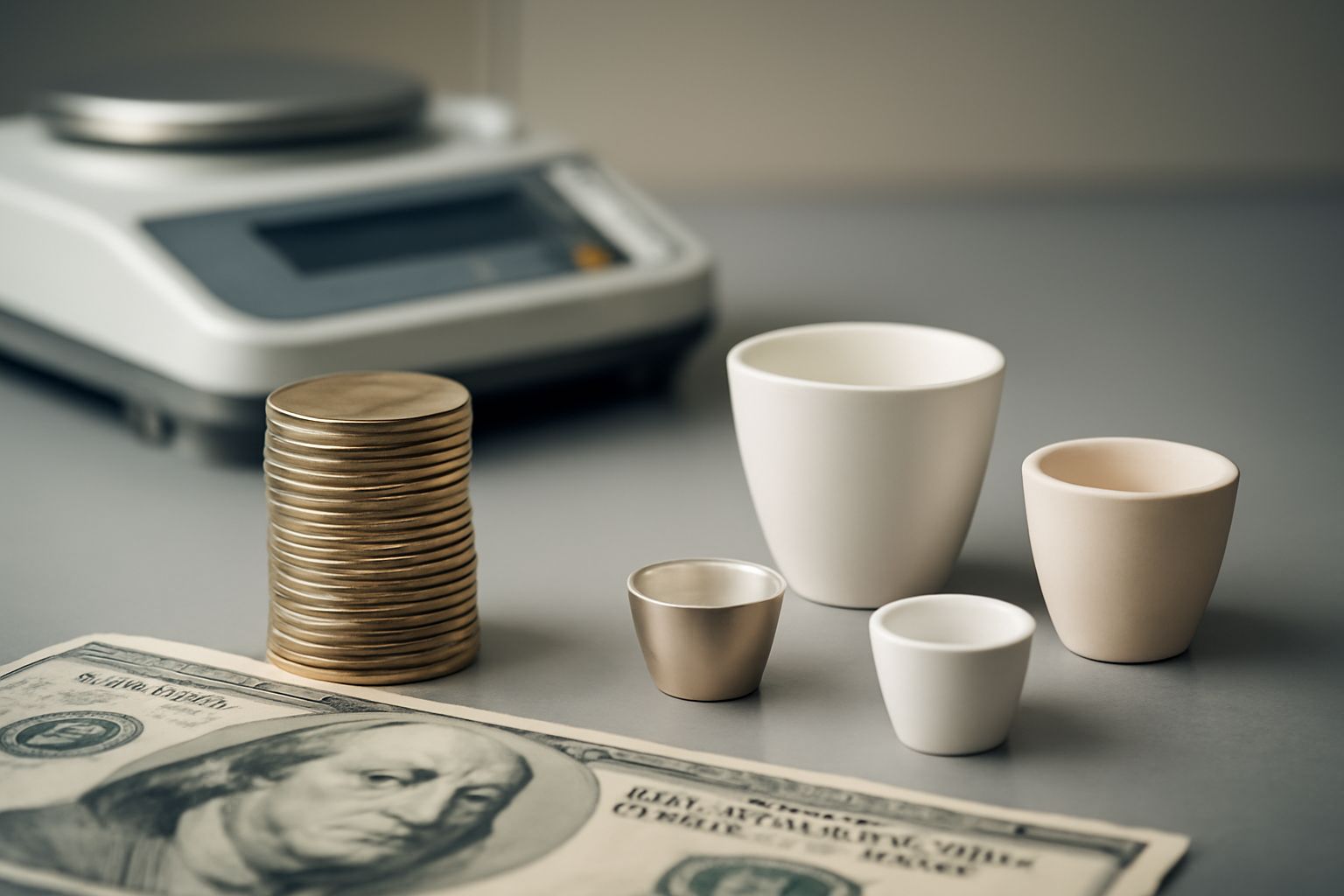Your cart is empty.
shop now
Your cart is empty.
shop now
Laboratories struggle with rising costs for high-temperature consumables. It’s hard to keep quality high without quick spending increases.
Cost savings in high-temperature crucibles are possible by choosing alternative materials, optimizing usage, and managing replacements, all while keeping reliable results in thermal analysis.

I have helped many labs balance their budgets by switching to cost-effective crucibles and changing how they manage replacements. Here are some proven tips to help your lab cut costs without giving up any quality or data trust.
Crucible budgets can spiral out of control due to the high cost of premium materials like platinum and high-purity alumina.
High-temperature crucibles cost more because of rare raw materials and labor-intensive production, but labs can save money by wisely selecting alternatives or bulk purchasing.
In my experience, platinum and top-grade alumina cost more due to pure sourcing and tight tolerance processing. Alternative sourcing, such as using high-quality substitutes or brand-matched equivalents, can cut the price. Bulk orders also help by taking advantage of volume discounts. See this breakdown:
| Cost Driver | Details | How to Save | Reference |
|---|---|---|---|
| Platinum content | Rare, stable at high temp | Select recycled or alloyed pans | Supplier catalog |
| Production precision | Tight tolerances and finishing | Buy compatible alternative brands | OEM guides |
| Import and delivery fees | International shipping costs | Order in larger lots | Customs rates |
By understanding what increases costs, you can shop smarter for crucibles and get better deals for your lab.
Labs lose money when they use expensive brands for standard work, even when cheaper substitutes work just as well.
Switching to compatible high-temperature crucibles from trusted alternative suppliers delivers the same performance but with lower costs.
In my lab, I have tested alternative crucibles that match OEM tolerances and purity. For routine analysis, these substitutes often last as long and cost less. Even for tricky samples, some brands offer platinum-plated or high-performance alumina pans at a fraction of the price. Here is a substitute table:
| OEM Crucible | Alternative | Cost Savings (%) | Performance Match | Source |
|---|---|---|---|---|
| TA Instruments Platinum | REDTHERMO Pt/Alloy | 35-45 | Equivalent | REDTHERMO |
| NETZSCH Alumina | Third-Party High-Purity Alumina | 30-50 | High | Lab comparison report |
| Mettler Toledo TGA pan | Custom Machined Pan | 30-40 | Similar | TGA article |
Using compatible substitutes protects laboratory budgets and keeps research moving forward without loss in data quality.
Relying only on brand-name crucibles raises costs, particularly when similar alternatives deliver equal reliability and safety.
Cost-effective alternatives to premium crucibles include platinum-plated, high-purity alumina, and custom-fabricated pans tailored to your specific instrument requirements.
I have sourced platinum-plated crucibles that survive repeated high-heat cycles but are far cheaper than pure platinum. High-purity alumina from non-OEM vendors meets most daily lab demands. Custom-made crucibles fill special needs at small-batch prices. Here’s my comparison:
| Alternative Type | Max Temp (°C) | Main Benefit | Recommended For | Info Source |
|---|---|---|---|---|
| Platinum-plated | 1500 | High temp, lower cost | Frequent cycles, low contamination | Platinum |
| High-purity alumina | 1650 | Chemically stable, affordable | Routine analysis, harsh chemicals | Alumina |
| Custom machined | 1000–1650 | Fit exact device/spec | Special projects, rare samples | Custom operations |
Smart matching between needs and alternatives keeps costs under control while still enabling advanced thermal analysis in the lab.
Labs overspend when they replace pans too early, or risk test failures by reusing damaged crucibles too long.
To manage costs, track crucible lifespan, rotate usage, and set clear replacement criteria based on wear, not just a fixed schedule.
My biggest savings often come from a simple tracking sheet for each pan. I check each one for signs of damage after every use, log results, and only replace when wear or corrosion is proven. I also rotate pans to spread wear across the whole inventory. Here’s my system:
| Management Step | Key Action | Cost Impact | Extra Info |
|---|---|---|---|
| Lifespan tracking | Log use/cycles for each pan | Delay premature replacement | Lab equipment |
| Visual inspection | Check for cracks, damage | Prevent test loss, avoid unsafe pans | Lab SOP guide |
| Rotational use | Alternate pans between tests | Even wear, maximize utility | Lab maintenance docs |
| Replacement plan | Replace on wear, not schedule | Just-in-time spending | Lab budget file |
With these steps, your lab can lower costs while keeping your test results safe from poor crucible performance.
Labs can significantly cut crucible costs by using alternatives, managing replacement cycles, and sourcing smartly, all without risking the quality or results of high-temperature tests.
Contact REDTHERMO Technical SupportTechnical support email: